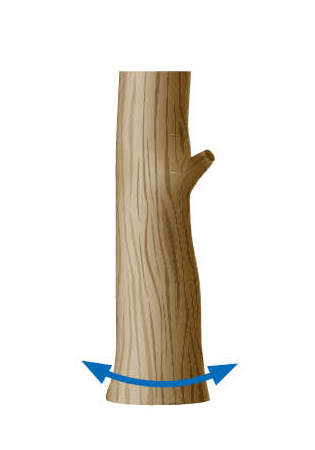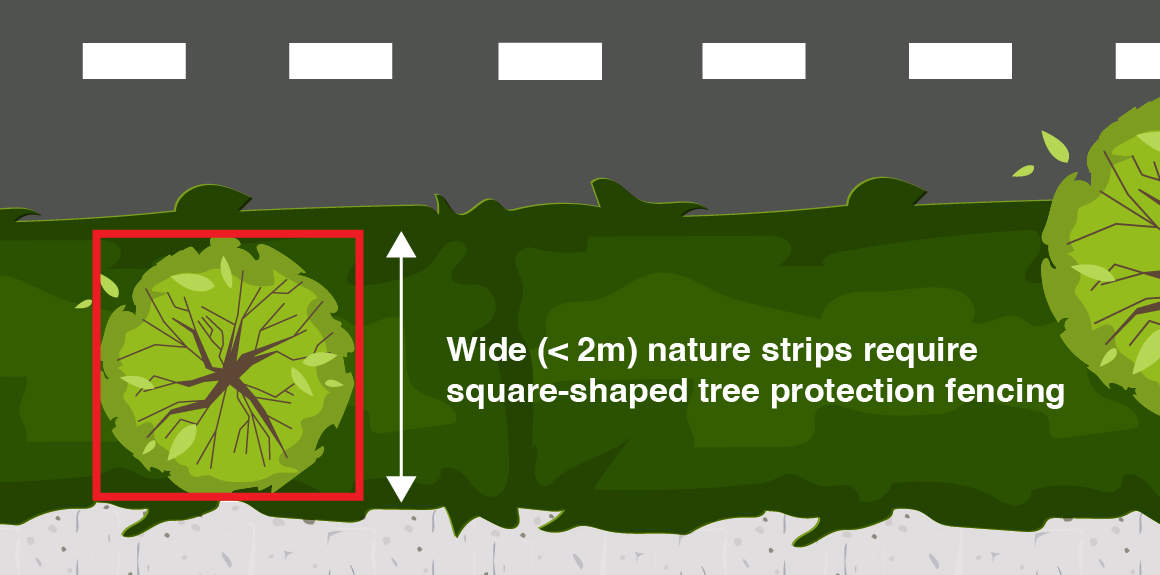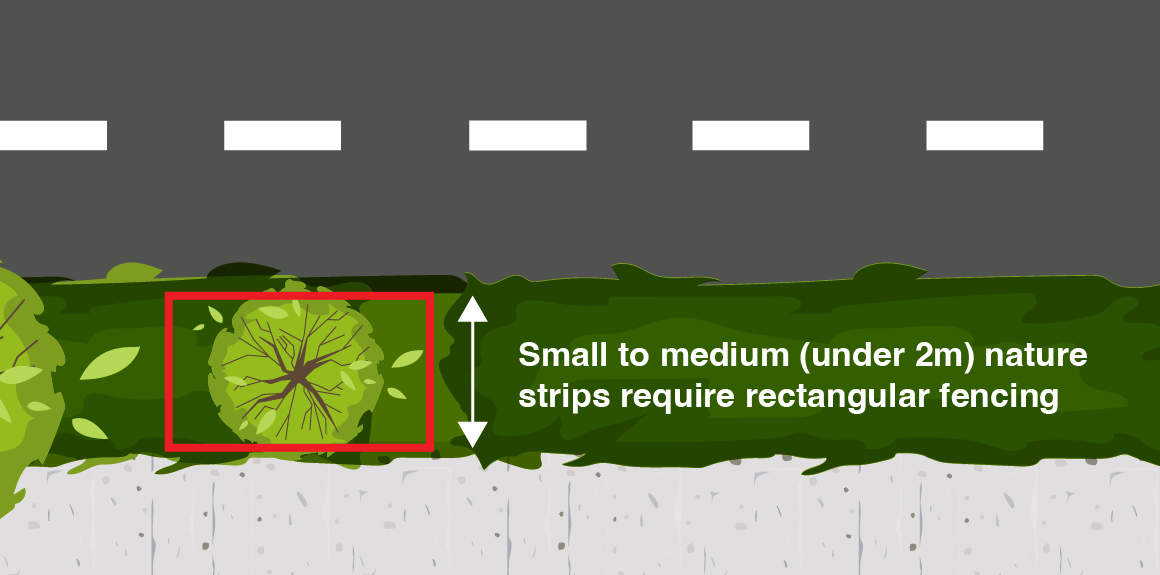Guidelines for working near Council trees
Permit holder and contractor responsibility
Bayside's trees form an urban forest that provides habitat for many species of animals, shade for our community, and increases the value of nearby properties.
Council trees
Council trees are protected under Local Laws 62(2), 51(2), the Summary Offences Act 1966 s9(1)(c) and Vegetation Protection Overlays (VPOs). Council trees are considered and protected as an asset.
Root pruning
Tree roots greater than 50mm must not be cut unless endorsed as a planning permit condition or authorised by Bayside’s Open Space Arborist in writing.
A penalty applies for damage to Council assets under Local Laws:
- 62(2) ‘A person must not destroy, damage, remove or interfere with any trees or plants on or within a municipal place; and
- 51(2) ‘A person must not, remove, prune or damage any street tree as a result of a vehicle crossing’s construction, installation, removal or alteration.’
The exclusion zone table below has been developed to provide guidance for possible excavation adjacent to Council trees. Mechanical excavation or trenching is not permitted inside the exclusion zone.
Exclusion zone distances for different tree sizes
|
Diameter at base of tree Measured from base of tree |
Exclusion zone No excavation permitted |
|---|---|
|
up to 25cm |
2.0 m from tree base |
| 25-50cm | 3.0 m from tree base |
| 51 - 65cm | 3.5 m – 4m from tree base |
| + 66cm | 5m from tree base |

Installation of infrastructure
Council’s Open Space Arborist must be contacted with a plan of the proposed works, site address, and tree location for all utilities/service and vehicle crossing requests. Read on below to view additional requirements.
Send plans to our Contact us form, marked Attention: Open Space Arborist. Please allow at least 10 working days from date received for response.
The Open Space Arborist will assess each application for final approval.
Utilities/services
Please provide the details listed above and the proposed service location. Proposed site of excavation should be identified in the plans for installation of services and vehicles crossings.
Boring must be used where there is potential conflict with large tree roots within the exclusion zone listed above.
Vehicle crossings (including Planning and Building permit referrals)
The location of a vehicle crossing inside a Council trees tree protection zone will be determined by non-destructive digging (hydro or air space) along the proposed line of excavation adjacent to the tree. Mature size and future growth of the tree must be taken into consideration.
Civil works undertaken by Council’s approved contractors require careful excavation and must be undertaken where there is obvious conflict with tree roots. Council tree contractor to be contacted for all required root pruning. Root pruning to be undertaken with a clean sharp saw, roots <50mm with a hand saw.
Nature strip planting policy
Our Nature Strip Planting Policy provides guidance for undertaking works on nature strips. Do not remove soil around street trees without prior approval by the Open Space Arborists.
Tree protection fencing
Tree protection fencing is required at all times during the period of the development, e.g., from demolition to completion of landscaping works.
The tree protection fence must:
- be established and maintained in accordance with AS 4970 2009 (Protection of trees on development sites)
- securely attached on all sides so it cannot be modified by site workers
- be a minimum height of 1.5 metres
- be rectangular/square in shape - follow the outline of the nature strip by extend up to (but not over) the back of kerb, edge of footpath and edge of vehicle crossing OR as identified in an approved Tree Protection Management Plan (TPMP).
- the Open Space Arborist must approve tree protection conditions in TPMP’s concerning Council tree protection.
- be maintained throughout the entire demolition and construction period.
Tree protection fencing may be moved to enable:
- vehicle crossing construction as approved by permit
- grass cutting inside fenced area. Note: No chemical/herbicide treatment is to be undertaken for grass/weed control inside the fence.
Wide nature strips (greater than 2 metres) require square-shaped tree protection fencing.

Small to medium (under 2 metres) nature strips require rectangular tree protection fencing.

Further information
For further information regarding Council trees and the maintenance services available can be found below.
Tree Pruning. Pruning requests are submitted on our request a tree prune page and are undertaken by Council’s authorised tree-care contractors.
Tree removal. For permission to remove a tree to facilitate development, see our Street and park tree management policy
We have created a handy Working with trees guidelines pdf if you require a print ready file to keep on hand.